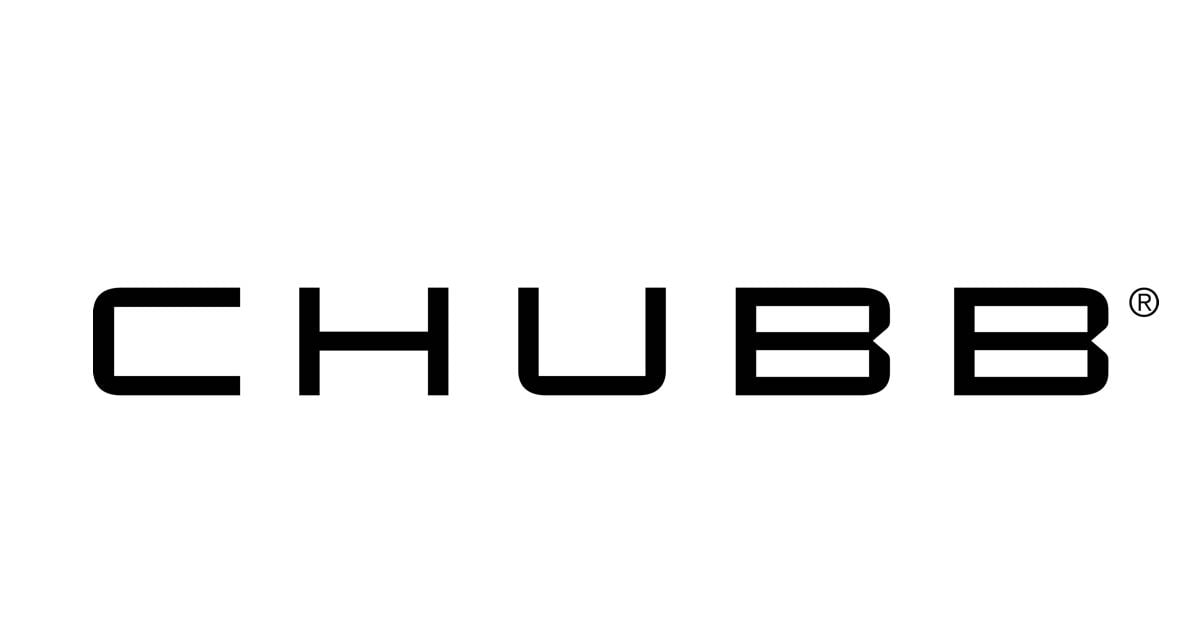The Best Home Insurance in Minnesota for 2023
Many or all of the products featured here are from our partners who compensate us. This influences which products we write about and where and how the product appears on a page. However, this does not influence our evaluations. Our opinions are our own. Here is a list of our partners and here's how we make money.
The average cost of homeowners insurance in Minnesota is $1,845 per year, or about $154 per month, according to a NerdWallet analysis. That’s slightly more than the national average of $1,820 per year.
We’ve analyzed rates and companies across the state to find the best homeowners insurance in Minnesota. Our sample rates are for a homeowner with good credit and $300,000 of dwelling coverage, $300,000 of liability coverage and a $1,000 deductible. Your rates will be different.
Note: Some insurance companies included in this article may have made changes in their underwriting practices and no longer issue new policies in your state.
The best homeowners insurance in Minnesota
If you’re looking to buy homeowners insurance from a well-rated national brand, consider one of these insurers from NerdWallet’s list of the Best Homeowners Insurance Companies.
Company | NerdWallet star rating | Average annual rate |
|---|---|---|
$1,315 | ||
$1,635 | ||
$1,665 | ||
$1,885 | ||
$2,935 |
More about the best home insurance companies in Minnesota
See more details about each company to help you decide which one is best for you.
Farmers
Coverage options
Discounts
NAIC complaints
Farmers
Coverage options
Discounts
NAIC complaints
Homeowners policies from Farmers may include two valuable types of insurance: extended dwelling and replacement cost coverage. Extended dwelling coverage gives you extra insurance for the structure of your house, while replacement cost coverage offers higher reimbursement for stolen or destroyed belongings.
Some Farmers policies also come with perks that can save you money. For example, with claim forgiveness, Farmers won’t raise your rate for a claim as long as you haven’t filed one within the past five years.
Learn more with our Farmers homeowners insurance review.
Coverage options
Discounts
NAIC complaints
State Farm
Coverage options
Discounts
NAIC complaints
America’s largest home insurer celebrated its 100th anniversary in 2022. One useful endorsement you may be able to add to a State Farm policy is an inflation guard rider, which automatically increases your policy limits to make sure your coverage doesn’t fall short.
State Farm offers a free Ting device as a perk for home insurance policyholders. Ting is a smart plug that monitors your home’s electrical network to help prevent fires.
Learn more with our State Farm homeowners insurance review.

Coverage options
Discounts
NAIC complaints

Chubb
Coverage options
Discounts
NAIC complaints
Chubb generally serves affluent policyholders with high-value homes, offering lofty coverage limits and plenty of perks. For example, the company covers water damage from backed-up sewers and drains, and pays to bring your home up to the latest building codes during reconstruction after a claim. (Many insurers charge more for these types of coverage.)
Chubb policyholders may also be able to take advantage of the company’s HomeScan service, which uses infrared cameras to look for problems behind the walls of your home.
Learn more with our Chubb homeowners insurance review.

American Family
Coverage options
Discounts
NAIC complaints

American Family
Coverage options
Discounts
NAIC complaints
Founded in Madison, Wisconsin, American Family receives fewer consumer complaints than expected for a company of its size. You may be able to customize your policy with optional add-ons such as identity theft, equipment breakdown or service line coverage, which pays for repairs to water, power or other underground lines that run to your house.
Homeowners may be able to save on their premiums by installing smart-home devices, bundling multiple policies or setting up automatic payments.
Get more information in our American Family homeowners insurance review.

Country Financial
Coverage options
Discounts
NAIC complaints

Country Financial
Coverage options
Discounts
NAIC complaints
Country Financial has three different levels of homeowners coverage to help you choose the package that’s best for you. You also have the option to add extra coverage for the structure of your home, in case inflation drives up the cost of rebuilding more than you expect.
Country Financial sells homeowners insurance through local representatives. The company has drawn far fewer complaints than expected to state regulators.
Learn more with our Country Financial homeowners insurance review.
How much does homeowners insurance cost in Minnesota?
The average annual cost of home insurance in Minnesota is $1,685. That’s 7% less than the national average of $1,820.
In most U.S. states, including Minnesota, many insurers use your credit-based insurance score to help set rates. Your insurance score is similar but not identical to your traditional credit score.
In Minnesota, those with poor credit pay an average of $3,985 per year for homeowners insurance, according to NerdWallet’s rate analysis. That’s more than double the rate of those with good credit.
Average cost of homeowners insurance in Minnesota by city
What you pay for homeowners insurance in Minnesota depends on where you live. For example, the average cost of home insurance in Minneapolis is $1,845 per year, while homeowners in Rochester pay $1,530 per year, on average.
City | Average annual rate | Average monthly rate |
|---|---|---|
Andover | $1,785 | $149 |
Anoka | $1,775 | $148 |
Burnsville | $1,805 | $150 |
Cottage Grove | $1,780 | $148 |
Duluth | $1,615 | $135 |
Eden Prairie | $1,815 | $151 |
Elk River | $1,755 | $146 |
Farmington | $1,800 | $150 |
Hopkins | $1,830 | $153 |
Lakeville | $1,805 | $150 |
Mankato | $1,660 | $138 |
Maple Grove | $1,810 | $151 |
Minneapolis | $1,845 | $154 |
Moorhead | $1,665 | $139 |
Osseo | $1,835 | $153 |
Rochester | $1,530 | $128 |
Shakopee | $1,810 | $151 |
St. Cloud | $1,640 | $137 |
St. Paul | $1,830 | $153 |
Stillwater | $1,805 | $150 |
The cheapest home insurance in Minnesota
Here are the insurers we found with average annual rates below the Minnesota average of $1,685.
Company | NerdWallet star rating | Average annual rate |
|---|---|---|
Secura* | Not rated | $955 |
$1,170 | ||
$1,315 | ||
North Star | 4.0 NerdWallet rating | $1,365 |
Western National | Not rated | $1,420 |
Auto Club Group (AAA) | $1,600 | |
$1,635 | ||
$1,665 | ||
*Secura homeowners policies are available only as part of a home/auto bundle. | ||
What to know about Minnesota homeowners insurance
Minnesotans are very aware of the harsh weather that can accompany living in the state. When shopping for homeowners insurance in Minnesota, you’ll want to consider the potential damage from severe weather, such as winter storms, hail, flooding and more.
If you aren’t sure about what your policy covers, contact your insurer to get more details.
Winter storms
Minnesota is known for its severe winters, including heavy snowfall, ice storms and freezing temperatures. These winter storms bring with them a host of issues, from fallen trees and collapsed roofs to burst pipes.
A standard homeowners policy typically covers damage from winter storms, but it's important to review your policy to make sure you have adequate coverage. You’ll also need to make sure you’re taking the appropriate steps to protect your home. For example, damage from frozen pipes may not be covered if you leave your heat off while out of town.
Some types of winter weather damage might require extra coverage. For example, your homeowners policy likely won’t pay for damage due to a backed-up drain or sewer caused by snowmelt. You’ll need to add that coverage to your policy.
Hail
Large hail storms can significantly damage your property, and Minnesota sees plenty of them. While your insurance policy may cover hail damage, it’s important to review it carefully, as many Minnesota homeowners are now finding this coverage only kicks in when there’s been substantial damage to their home’s siding or roof.
You may also have a separate deductible for wind or hail damage. These deductibles are often either a flat rate, such as $1,000, or a percent of your dwelling coverage. For example, your policy may have a $1,000 deductible for most claims and a 1% deductible for hail or wind claims. So if your house has $250,000 worth of dwelling coverage, you’d have to pay for the first $2,500 of hail damage yourself.
Tornadoes
Although tornadoes are uncommon in Minnesota, they do happen, particularly in the southern part of the state that’s closest to Tornado Alley. Tornadoes can cause extensive damage to homes, including roof damage, broken windows, and structural damage.
Standard homeowners insurance will cover tornado damage. However, you should still review your policy carefully, as there may be a separate deductible for wind damage.
Flooding
Minnesota is known as the Land of 10,000 Lakes. That, combined with heavy rain and snowmelt, means flooding is a key consideration for Minnesota homeowners. However, most standard homeowners insurance policies do not cover flood damage. In Minnesota, 40% of flood claims came from outside high-risk areas. As a result, you may want to consider purchasing separate flood insurance coverage through the National Flood Insurance Program.
To find out if you’re at risk, check out the Federal Emergency Management Agency's flood maps or visit RiskFactor.com, a website from the nonprofit First Street Foundation. Even if your property is considered low risk, it may be worthwhile to purchase flood insurance for extra peace of mind.
Remember that while you can buy flood coverage anytime, there’s typically a 30-day waiting period before the insurance takes effect. Here’s more information about flood insurance and waiting periods.
Wildfires
Dry conditions can lead to wildfires in heavily wooded areas of the state, which can be devastating to homeowners in wildfire-prone areas. Homeowners insurance typically covers damage from fires, but it's important to review your policy to ensure adequate coverage and to take steps to protect your home if it could be at risk.
Pay particular attention to your dwelling coverage limit. This is the amount the insurance company will pay to rebuild your house. A significant fire can destroy your whole home, so review your policy and discuss it with your insurance agent to be sure your coverage can help you rebuild if necessary.
Minnesota insurance department
The Minnesota Commerce Department’s Insurance Division oversees the state’s insurance industry and provides consumer protection and information. For example, it provides resources on what’s frequently covered under homeowners insurance policies and tips for filing a claim with your insurance.
The Minnesota Commerce Department’s Insurance Division is also your go-to location to file a complaint against your insurance company through its online portal. If you have questions about filing a complaint, contact the customer service department via email at [email protected] or toll-free at 800-657-3602.
Looking for more insurance in Minnesota?
Amanda Shapland contributed to this story.
NerdWallet averaged rates for 40-year-old homeowners from various insurance companies in every ZIP code across the state. All rates are rounded to the nearest $5.
Sample homeowners were nonsmokers with good credit living in a single-family, two-story home built in 1984. They had a $1,000 deductible and the following coverage limits:
$300,000 in dwelling coverage.
$30,000 in other structures coverage.
$150,000 in personal property coverage.
$60,000 in loss of use coverage.
$300,000 in liability coverage.
$1,000 in medical payments coverage.
We made minor changes to the sample policy in cases where rates for the above coverage limits or deductibles weren’t available.
We changed the credit tier from “good” to “poor,” as reported to the insurer, to see rates for homeowners with poor credit.
These are sample rates generated through Quadrant Information Services. Your own rates will be different.
Star rating methodology
NerdWallet’s homeowners insurance ratings reward companies for customer-first features and practices. Ratings are based on weighted averages of scores in several categories, including financial strength, consumer complaints, coverages, discounts and online experience. These ratings are a guide, but we encourage you to shop around and compare several insurance quotes to find the best rate for you. NerdWallet does not receive compensation for any reviews. Read our full homeowners insurance rating methodology.
Complaint methodology
NerdWallet examined complaints received by state insurance regulators and reported to the National Association of Insurance Commissioners in 2019-2021. To assess how insurers compare to one another, the NAIC calculates a complaint index each year for each subsidiary, measuring its share of total complaints relative to its size, or share of total premiums in the industry. To evaluate a company’s complaint history, NerdWallet calculated a similar index for each insurer, weighted by market shares of each subsidiary, over the three-year period. NerdWallet conducts its data analysis and reaches conclusions independently and without the endorsement of the NAIC. Ratios are determined separately for auto, home (including renters and condo) and life insurance.



